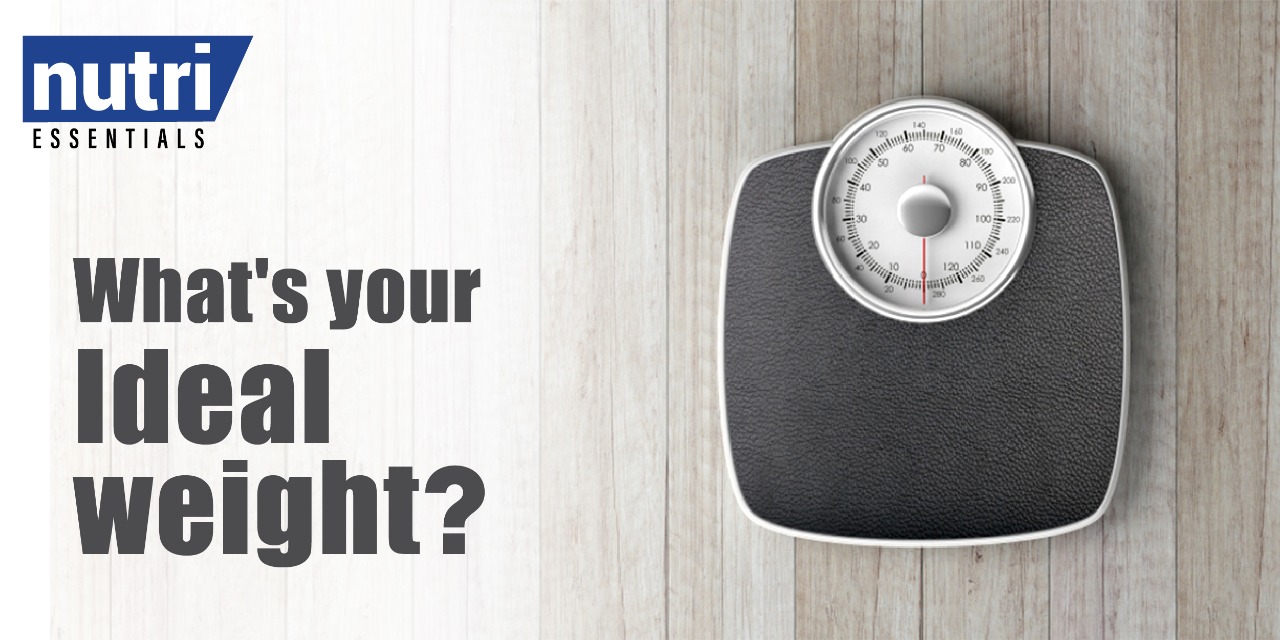Quality products for you & your family to stay ahead in life.

What's your ideal weight? Everyone has wondered one time or another that am I overweight or underweight! The answer isn't always as simple as looking at a chart that you find online. There are multiple factors on which the weight of a person depends on.
Here is the list of factors on which the weight of a person depends.
• height
• sex
• fat and muscle composition
• frame size
• other factors
The body mass index (BMI) is one of the most widely used methods for determining a healthy weight range. It's as simple as plugging your height and weight into a calculator to calculate your current BMI. A score of 18.5 to 24.9 indicates that you are in the "normal" weight range for your height. You're deemed underweight if your result is less than 18.5. You're considered overweight if your BMI is between 25 and 29.9.
Please keep in mind that BMI isn't as reliable for those who aren't on the map above. (In other words, people who are taller or shorter may have a BMI that does not accurately represent their health.) BMI has certain disadvantages. For one thing, it doesn't account for all of the factors that could influence your ideal weight. For example, older adults often store more body fat than younger adults. Females generally have higher body fat than males. Athletes may have a dense muscle that contributes to a higher weight.
In all these examples, the BMI number may not be the best indicator of whether a person is at their ideal weight.
Some other Methods to determine a healthy weight
1. Waist to Hip ratio:- The ratio of your waist circumference and hip circumference creates what's called your waist-to-hip ratio (WHR). This number shows you how much of your fat is stored in your lower body, which includes your waist, hips, and buttocks. A healthy ratio for females is 0.85 or less. For males, it's 0.9 or less. A WHR higher than 1 may indicate an increased risk of heart disease and related conditions for both males and females. This can be done at home follow the instructions.
1. Stand and breathe normally. Then breathe out and use a measuring tape to measure the inches around your natural waist, which is the smallest part above your belly button. This number is your waist circumference.
2. Then take your tape and measure around the largest part of your hips and buttocks. This number is your hip circumference.
3. Divide your waist circumference by your hip circumference to get your WHR.
2. Waist to Height Ratio:- One of the most important markers of your wellbeing is the amount of fat around your midsection. The waist-to-height ratio (WHtR) is often used to determine the risk of cardiovascular disease and death. Take your waist circumference in inches and divide it by your height in inches to get your WHtR. You're normally in the healthy range if your waist measurement is less than half of your height.
3. Body Fat Percentage:- Your weight isn't the only indicator of how much fat you have on your body. Depending on the type of lifestyle, diet, and activities you engage in, your body will have a different composition. Muscle and fat weigh different amounts. An athletic person may get an inaccurate BMI if their body is made of mostly muscle because it will cause them to weigh more. So a body fat measurement may be more effective. To get your body fat percentage, you may visit your doctor or personal trainer, or use an online calculator. The measurements you'll need include your height, weight, waist and hip circumferences, and wrist and forearm circumferences.
What is the ideal weight for men and women well the answer is more complex than looking at the chart, many variables are taken into account, and then the ideal weight is calculated.
How should you manage your Weight?
There are no special pills that will help to reduce weight and get ideal weight. Here are some ways in which you can manage your weight
• Eat a diet of healthy, whole foods:- Healthy options include fresh fruits and vegetables, low-fat dairy, lean protein, whole grains, and nuts. These foods are normally found along the grocery store's perimeter.
• Get regular exercise:- Aim for 150 minutes of moderate physical activity each week, such as walking, or 75 minutes of more intense activity, such as running.
• Keep a food diary to track calories:- The trick to losing weight is to burn more calories than you consume. You may have noticed that you snack mindlessly when watching TV or consume too large portions while dining out. These trends would be easier to note if you keep a diary.
• Get support from friends, family, and other sources:- Overeaters Anonymous is a support organization for individuals who suffer from compulsive overeating, anorexia, food abuse, bulimia, and other eating disorders.
There are several methods for determining your ideal weight. Most of them, particularly when done at home, have some margin of error. If you're worried about your weight, schedule a physical test with your doctor. Your doctor can also assist you in developing a weight-loss or weight-gain strategy. Begin your journey for ideal weight some easy steps and take one step at a time and live a healthy life.

